AI Optimizes the Old World. Bitcoin Builds a New One
“All that glitters is not gold.” This 17th-century proverb applies wonderfully to flashy innovations. For several years, Artificial Intelligence (AI) has been presented to us as a revolution comparable to electricity or the Internet. But is it really a revolution? Or rather a spectacular optimization of what already exists? As we know it, AI revolutionizes nothing. It merely oils the gears of an already established system and mainly fits within the continuity of a centralized paradigm. At the same time, another technology, much less publicized but much more radical, pursues its trajectory: Bitcoin and decentralization. Unlike AI, Bitcoin does not just improve existing systems. It questions them, and sometimes even makes them obsolete. The true revolution today, the only one, is Bitcoin. Because it does not make the old world faster, it builds a new one.
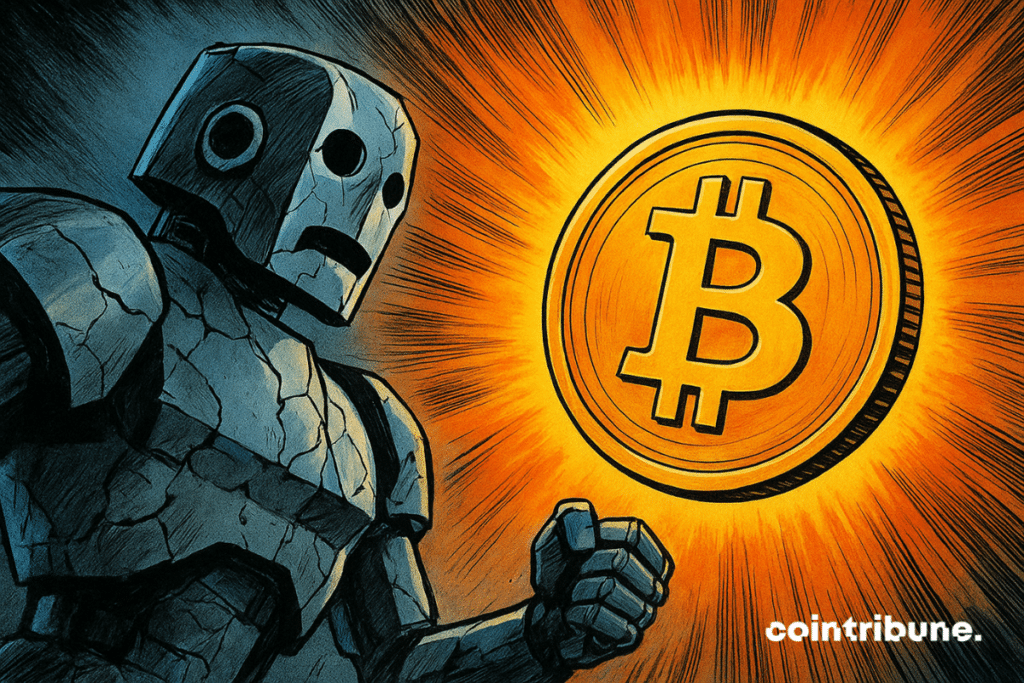
In brief
- AI is not a revolution, but a spectacular optimization of what exists, which accelerates the centralized system without changing its trajectory or power structures.
- Bitcoin, on the contrary, embodies a systemic break because it redefines money, trust, and sovereignty by eliminating any central authority.
- True revolutions are not born in the spotlight but discreetly, transforming infrastructures and power relations rather than dazzling with media novelty.
- Enduring revolutions are not those applauded, but those sought to be banned. They are measured by their resilience and the intensity of the resistance they provoke.
- Centralized AI strengthens technology empires, while decentralization, driven by Bitcoin, paves the way for shared digital and economic sovereignty.
- The future of the next 50 years will rely on decentralized innovations, the only ones capable of sustainably reshaping civilization beyond superficial technological illusions.
What is a true revolution?
A true revolution is not to be confused with a simple incremental optimization. The latter consists of improving what already exists: increasing speed, efficiency, productivity, or comfort, while keeping power structures intact. AI embodies this logic, perfecting processes without overturning the established order. In contrast, a systemic break profoundly changes the power relations, institutions, and modes of organization. Bitcoin is the illustration: it questions money, centralized control, the authority of states and banks. A revolution does not only speed up a journey. It changes the trajectory and the rules of the game. Moving from horse to car is an improvement; inventing the airplane is a shift. AI is a horse on steroids, Bitcoin is aviation. What glitters dazzles for a while, but only discreet and constrained innovation builds solidity and durability.
Facade innovations: revolution or mirage?
So-called “modern” revolutions often arise from massive media coverage that creates immediate hype. They are credited with quasi-magical powers, while they are often only extensions of the already existing system. Generative AI perfectly illustrates this phenomenon. Presented as a break, it is quickly absorbed by Microsoft and Google to strengthen their dominance. Rather than changing the rules, it innovates by optimizing existing tools and consolidates centralized structures. Media discourse masks this reality by creating a permanent novelty effect. Media-covered revolutions charm through their speed of adoption but lack historical depth. They shine by their ability to surprise in the short term, while remaining predictable in their uses. In reality, they perfect the status quo instead of challenging it.
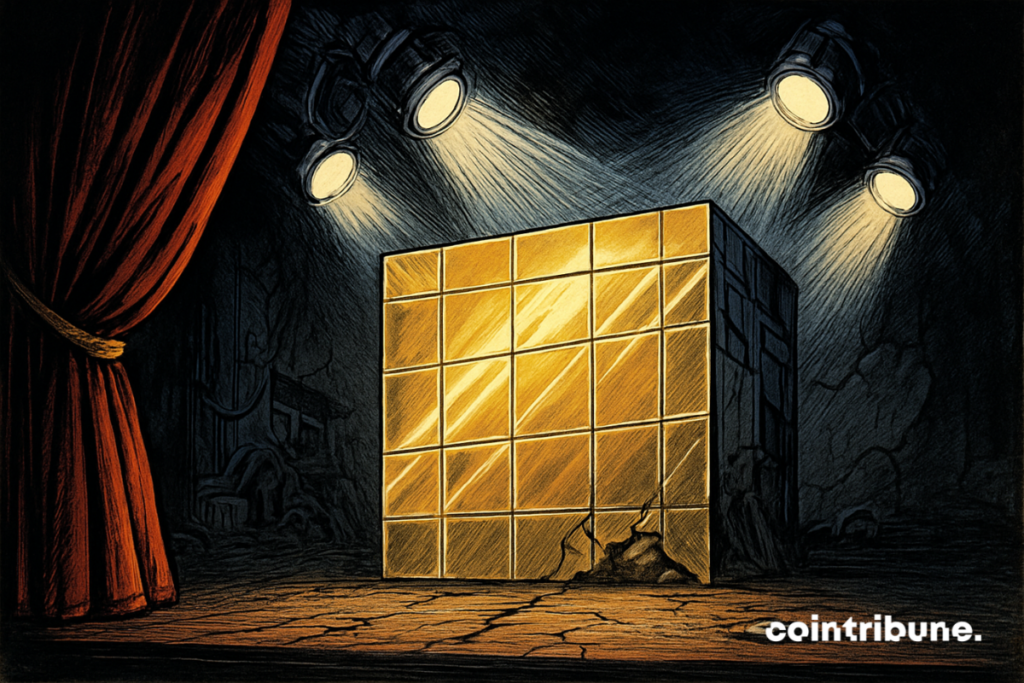
This scenario has been repeated several times over the past decades. The example of the internet is the most striking illustration. The speculative bubble of the 2000s generated billions of investments before collapsing sharply. Originally meant to be decentralized, the internet did not change its nature. It simply evolved towards increased centralization, dominated by a few platforms. Social networks followed the same path. Presented as a social revolution, they ultimately reinforced targeted advertising and surveillance. Behind the veneer of innovation lies the same logic: control and optimization of what exists. These pseudo-revolutions generate immediate impact and collective enthusiasm, but they do not disrupt fundamental structures. Their predictability prevents them from embodying real breaks. Ultimately, they do not disturb the established order but only make it more efficient and powerful.
Disruptive innovations: cluster bombs for existing systems
True revolutions are not recognized by their immediate media shine but by their discretion and transformative depth. The industrial revolution is the perfect example: long hindered by state regulations, it slowly progressed undercover. Yet steel revolutionized the modern world, becoming the engine of the industrial civilization. Colossal bridges and skyscrapers are its children. Railroads, born of this advance, became the heart of the industrial economy, connecting territories, goods, and people. Nothing spectacular in the short term, but an irreversible metamorphosis of urbanism and architecture in the long term. History proves it: it is not flamboyant technologies that change the world, but the infrastructures in the shadows. True revolutions work in depth, where the foundations of modernity are built.
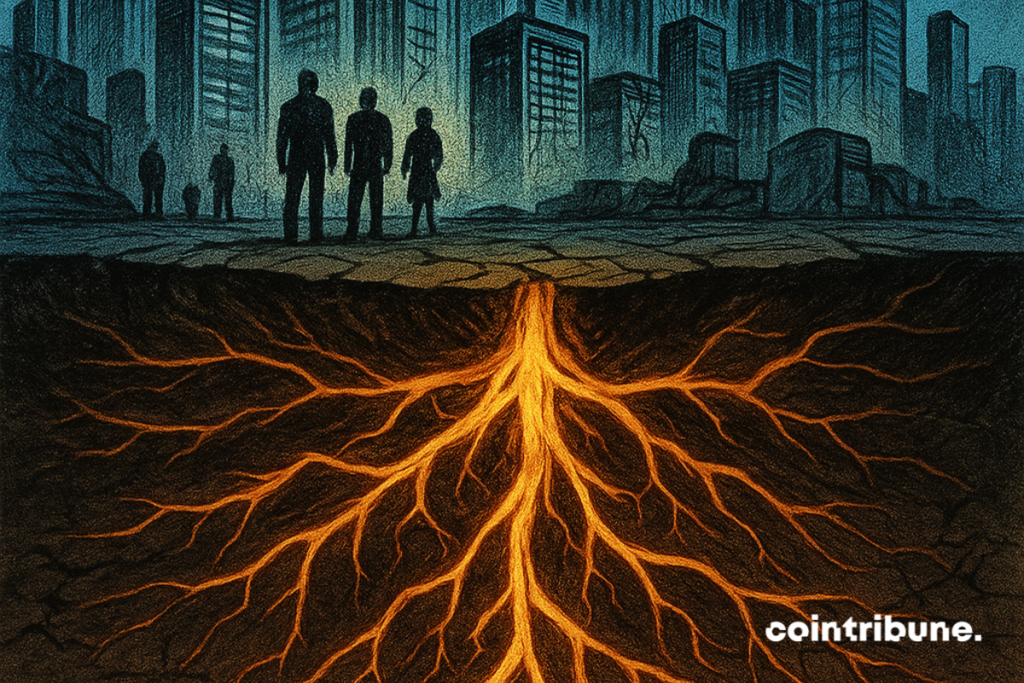
Telecommunications follow the same logic. Hindered, monitored, originally considered militarily strategic by states, they advance slowly but change everything. They redefine modes of civilization by connecting people worldwide through instant information flows. They invent the information society, the pillar of all subsequent visible innovations: radio, television, satellites, internet, mobile telephony. Discreet in the short term, disruptive innovations become the deep roots of modernity and the fuel of all contemporary technologies. True shadow revolutions disturb but transform forever. In other words, they constitute the durable infrastructures of superficial innovations and radiant, but often ephemeral applications.
AI: an acceleration, not a disruptive revolution
Consequently, AI is often presented as a revolution, but it primarily embodies an acceleration of the existing. Its feats—content generation, task automation, predictive analytics—are attractive but do not upheave foundations. AI remains dependent on already established structures: its data centers demand colossal energy, controlled by centralized actors. The GAFAM and governments dominate the models, data, and infrastructures, thereby reinforcing an ever-increasing centralization. Behind the futuristic image, the reality is clear: AI consolidates the status quo. It increases speed and productivity but does not invent a new order or redistribute power. AI is a turbocharged engine grafted onto an existing machine, not a systemic revolution.

AI amplifies humans and organizations but without deeply transforming their nature. It optimizes processes, improves profitability, smooths management, while remaining confined within dominant institutional frameworks. It makes giants even bigger, consolidating technological monopolies instead of challenging them. The illusion lies in speed: AI saves time, efficiency, and comfort but without modifying the global trajectory. A disruptive revolution changes the paradigm, redistributes power relations, and invents a new order. AI is not there yet. It is an amplifier, not a transformer. Free revolutions certainly create innovation, but they also waste immense resources. Those truly regulated forge durability, which current AI does not embody.
Bitcoin’s decentralized blockchain: a deep revolution and a radical break
Unlike AI, which serves as an exoskeleton for technology empires, Bitcoin directly attacks the foundations of the existing system. For the first time in history, a currency operates without a central authority, liberated from central banks and states. Its novelty is absolute: trust no longer depends on human institutions but on cryptography and shared rules. This shift profoundly transforms economic and social logic by redefining power relations. Bitcoin does not reinforce the old system; it proposes a new, credible, and autonomous alternative. Each person can become their own bank without depending on an intermediary. This redistributed power outlines a multipolar order based on cooperation rather than domination. Contrary to AI, Bitcoin delegitimizes monopolies. It changes the global monetary trajectory. It is comparable to the printing press, which freed knowledge from religious and political monopoly.
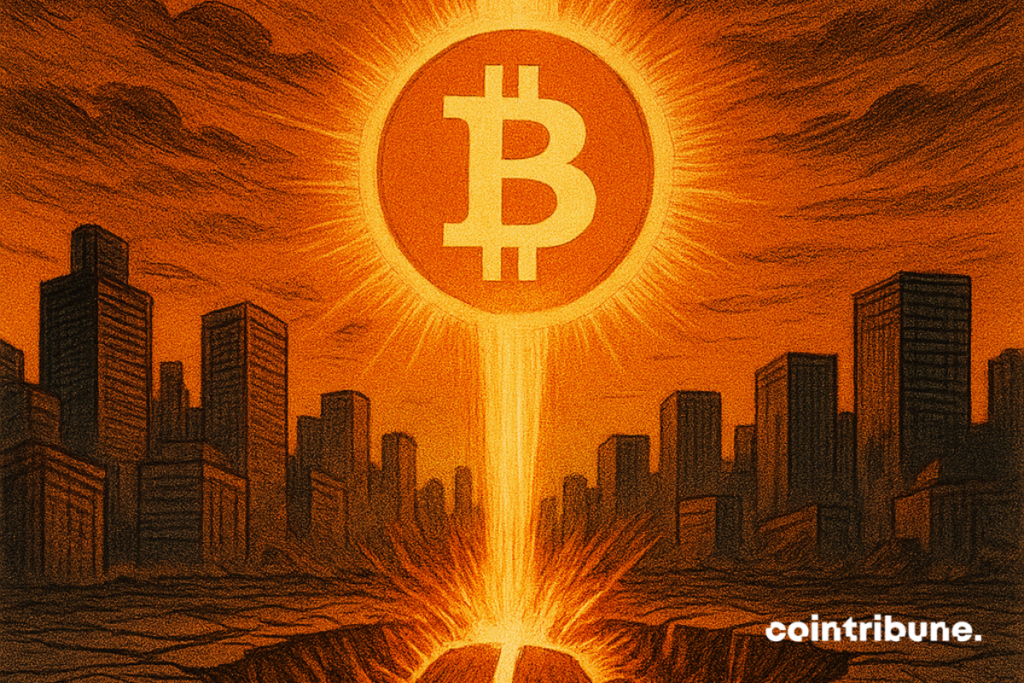
The consequences of Bitcoin are deep and lasting because it introduces unprecedented resilience. A decentralized network without a head cannot be destroyed by a single entity, even against bans. For sixteen years, it has resisted regulations, political attacks, and state elimination attempts. This endurance illustrates its disruptive power and ability to survive repression. Bitcoin prepares a future where economic rules will be rewritten. Where AI serves existing conglomerates, Bitcoin makes them obsolete. Its very existence is a ticking bomb for the global monetary order. History shows that true revolutions do not start in media spotlights but discreetly. Bitcoin does not optimize the present; it radically challenges it. It is a true monetary and civilizational revolution.
AI optimizes the Empire, Bitcoin fractures it
History proves it: true revolutions are not greeted with applause but with fear. When an innovation disturbs the established order, it directly attacks the power structures dominating society and economy. Each time, the same scenario repeats: the more innovation disturbs, the more opposition it encounters. This resistance is the signature of a true break. Enduring revolutions are not those applauded but those sought to be banned. That is why AI is not a revolution but a tool that strengthens the status quo without threatening it. It perfects the gears of a centralized system and does not suffer massive bans because it does not challenge the Empire’s power.
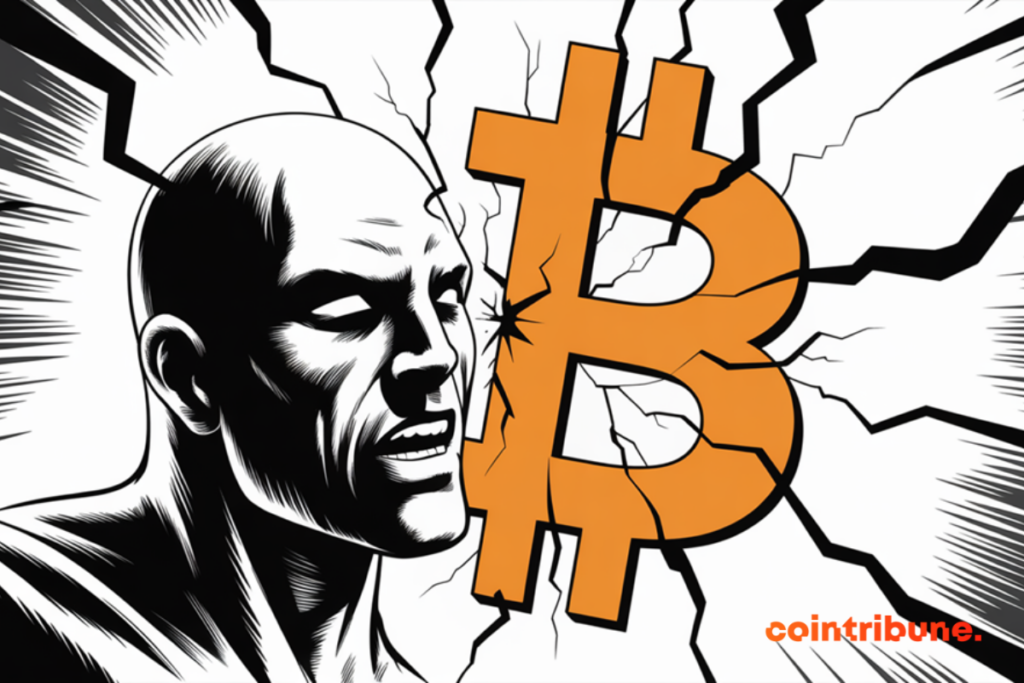
Bitcoin, by contrast, deeply disturbs because it redefines money and escapes institutions that have long claimed to control it. Money is indeed the engine of economic exchanges and the fuel of the economy. It has always been coveted to become an instrument of power and harm, as an extension of diplomatic apparatuses. Predictable regulations, bans, and media attacks against Bitcoin are not weaknesses. They are, on the contrary, proof of its strength and resilience. A technology feared so much reveals its ability to transform the world profoundly. History is clear: a true revolution is measured by its resilience and the violence of the resistances it provokes. AI is widely adopted and publicized; Bitcoin is fiercely fought and demonized. This simple contrast says it all. The revolution does not shine; it disturbs. And today, it is Bitcoin that disturbs.
Without decentralization embodied by Bitcoin, AI will not progress further
Centralized AI, on the other hand, personifies the system but constitutes a civilizational threat. In the hands of a few giants, it becomes a machine of surveillance, profit, and control. Each request feeds their models; each data pulled strengthens their monopoly. This extreme centralization concentrates power, weakens resilience, and fuels inequalities. A failure, attack, or political decision can paralyze the entire system. This is not the future; it’s a golden prison. Humanity cannot entrust its collective intelligence to private empires. Decentralization is the only way out: an open, distributed network without a single master. It returns data control to individuals, guarantees radical prosperity and transparency, and opens access to all. Decentralizing AI is breaking the invisible chains that bind our digital freedoms. It is transforming a weapon of domination into a common good, built and governed by humanity, for humanity.
Bitcoin has already shown the way. A currency without a central bank, a network without control points and without single points of failure. 16 years of attacks, unfavorable regulations, political hostility, bans: nothing has destroyed Bitcoin. Its resilience proves that a decentralized system can survive, thrive, and reinvent trust. What Bitcoin did for money, AI must accomplish for collective intelligence. A decentralized AI would not belong to GAFAM but to all those who participate in the network. Each node would strengthen security; each user would become an actor, not a mere consumer. This is a radical transformation: moving from an AI-slave of monopolies to a free AI aligned with the collective interest. Where centralized AI prepares a world of dependency, decentralized AI opens a future of sovereignty and prosperity. Like Bitcoin, it would be a peaceful revolt against control, a universal liberation weapon.
Decentralization as the foundation of the next 50 years
Over the next 50 years, media-covered innovation will present itself as a promise of increase but will always depend on existing structures. Quantum computing will continue to fascinate crowds, but its control will remain confiscated by great powers and strategic multinationals. Brain-machine interfaces will be presented as the ultimate emancipation but will mainly serve to reinforce dependence on centralized platforms. Comfort biotechnology will offer longevity and aesthetic modifications but will only transform the medical consumption of dominant classes. These spectacular innovations will create a blazing imagination, attract capital, and cause bubbles, but they will not disrupt the established order. They will seduce by their shine but will not change the parameters that still structure civilization.
True revolutions of tomorrow will therefore be focused on decentralization. Invisible today, they will be born from constraints and disturb the established order before reshaping civilization. Decentralized energy, controlled fusion or space solar, will redistribute power relations among states, dominant companies, and sovereign local communities. Transnational monetary systems, derived from Bitcoin technology, will break the grip of central banks and states on the global economy. Distributed biology, via bioprinting and cellular agriculture, will radically transform the food chain and reduce geopolitical food dependencies. Decentralized collective intelligences will surpass centralized AI, creating a cognitive infrastructure escaping the monopoly of technology and political giants. These discreet innovations will fuel a new distributed, unpredictable order that will tip modernity onto a different trajectory.
Bitcoin and AI, the clash of two worlds
It is obviously not about discrediting AI as a true innovation or disputing its extraordinary impact. But real revolutions always arise from existential crises, never from gradual progress or peaceful innovations. AI is only a significant speed change, not a trajectory change. It amplifies the existing but never transforms it. It’s digital doping: it makes the old world runners run faster without shifting the finish line. Bitcoin, on the other hand, leaves the stadium. It invents a new race and redistributes global economic power through decentralization, a fundamental concept that AI will inevitably benefit from. We live in an instant civilization, fascinated by what shines, but blind to silent foundations. Yet, these foundations represent the essential infrastructure on which the future will rest. Historical revolutions build slowly, in shadow and over time, sheltered from immediate recognition. And all that glitters.
Maximize your Cointribune experience with our "Read to Earn" program! For every article you read, earn points and access exclusive rewards. Sign up now and start earning benefits.

Consultant international en gestion de projet. Ingénieur de formation, avec une maîtrise en administration des affaires (M.B.A.) et affaires internationales d’HEC Montréal. Passionné de technologie et de cryptomonnaies depuis 2016.
The views, thoughts, and opinions expressed in this article belong solely to the author, and should not be taken as investment advice. Do your own research before taking any investment decisions.